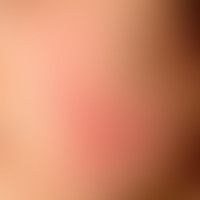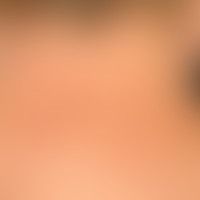Lupus erythematosus tumidus Images
Go to article Lupus erythematosus tumidus






lupus erythematodes tumidus: chronic, relapsing-active for 2 years, completely without symptoms; succulent, surface-smooth, red plaques; follicular structures preserved; no hyperesthesia; ANA: neg; DIF: uncharacteristic.

Lupus erythermatodes tumidus:recurrent disease patternforseveral years. no itching, no other subjective complaints. significant improvement of symptoms after treatment with antimalarials.

Lupus erythematodes tumidus. Chronicstationary course of the skin symptoms. No significant accompanying clinical symptoms.

Lupus erythermatodes tumidus:chronic recurrent disease patternforseveral years. no itching, no other subjective complaints. significant improvement of symptoms under therapy with antimalarial drugs.

lupus erythematodes tumidus: chronic, persistent for months, little symptomatic, succulent, surface smooth plaques. reactivation after UV exposure. no hyperesthesia. ANA: constant 1:320; DIF: uncharacteristic. good response to antimalaria therapy.

lupus erythematodes tumidus: for 4 weeks existing, little symptomatic, succulent, bright red, surface smooth papules and plaques. probably occurred after UV exposure (correlation could not be clearly clarified). no hyperesthesia. ANA: 1:160; DNA-Ak negative; DIF: uncharacteristic. initiation of therapy with Resochin.

lupus erythematodes tumidus: chronic, relapsing disease pattern that has been active for months, completely without symptoms; succulent, surface-smooth, red plaques. high sensitivity to light. no hyperesthesia. ANA: negative; DIF: uncharacteristic. good response to antimalarial therapy.

lupus erythematodes tumidus. chronicstationary course of the skin symptoms. no significant clinical accompanying symptoms. significant improvement of the sympotaxis under antimalaria therapy.


Lupus erythermatodes tumidus: chronic recurrent disease for several years.

Lupus erythematosus tumidus: Discretely infiltrated, livid, nummular erythema with missing epidermal component and small papules on the left upper arm in a 46-year-old female patient.


